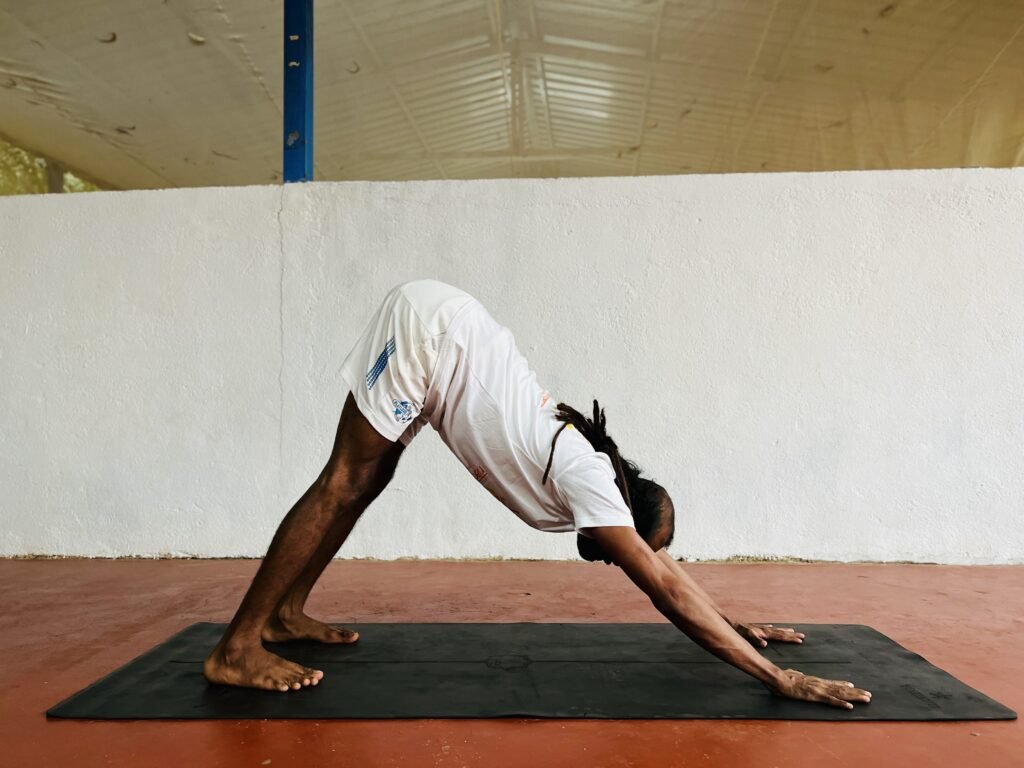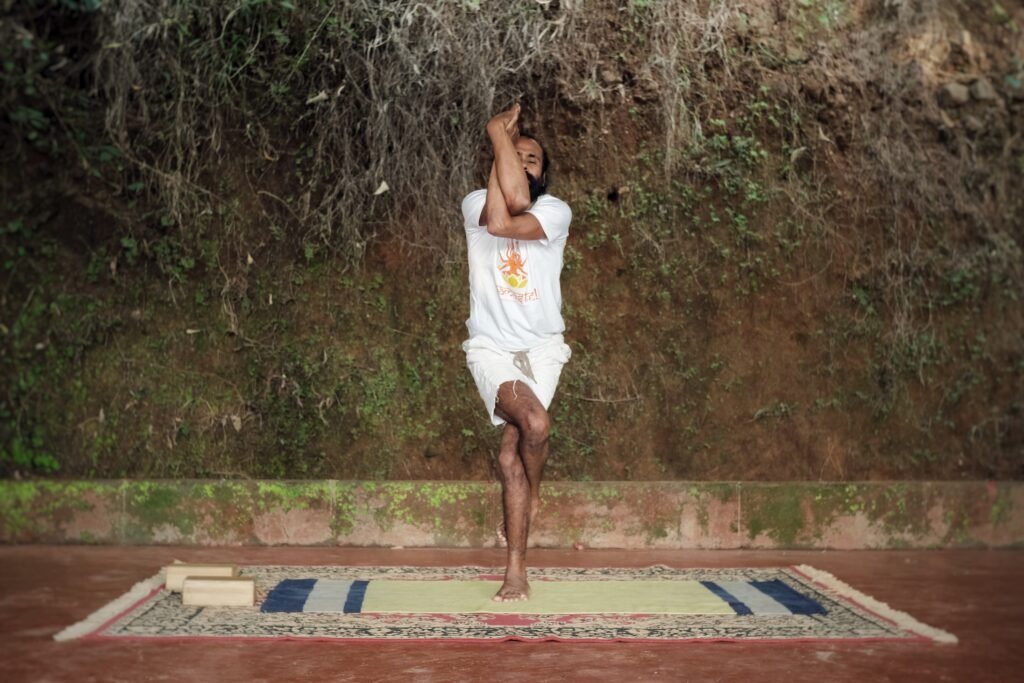Strong legs are needed for many yoga poses. Standing and balancing positions, where you may feel the most sensation in your legs, also support the development of stronger bones while enhancing flexibility and strength.
The physical practice of yoga uses flexibility and the body’s capacity to handle environmental stress to increase the body’s resilience. Strong and flexible muscles, unwavering balance, mobile joints, and the emotional resilience that comes with effort are just a few examples of how this resilience manifests itself.
This is particularly true of the legs, which have the longest bones and largest muscle in the body.

FOR BEGINNERS:
Downward-facing dog pose: Adho Mukha Svanasana
Although the downward-facing dog is frequently described as a resting pose, the real rest is in your arms. Giving your arms a break from supporting your weight by purposefully shifting it back onto your legs, typically the more substantial muscle group, will reduce stress on your arms So when you’re in this pose, keep your hips up and your heels pointing down.
Extended Side Angle Pose: Utthita Parsvakonasana
There is a frequent emphasis on the arm position in this pose, but as long as your front knee remains deep, it doesn’t matter whether you rest your forearm on your thigh or bring your hand to the floor.
Let the arm fall where it may while concentrating on getting your thigh parallel to the floor with the knee over the ankle.
Mountain Pose: Tadasana
Keeping your attention throughout even the most basic standing poses can result in a workout. This entails spreading your toes widely and utilizing your thigh muscles for the legs. The sit bones spread due to a slight inward rotation of the thighs.
Pyramid Pose: Parsvottanasana
Keep your muscles engaged in this pose, especially your thighs, which should draw your kneecaps upward. In the long run, a microbead in the front knee will protect your joint, mainly if you are prone to hyperextension.
Standing Forward Bend: Uttanasana
Another pose we perform so frequently that it is simple to skim the surface rather than approaching it carefully each time. Allow your rotation to originate from the pelvis rather than the lower back to deepen your forward bend.
Standing Straddle Forward Bend: Prasarita Padottanasana
Although getting your head on the ground is frequently thought to be the “goal” of this pose, that is not the case. Depending on your height, take the feet no wider than about 3.5 feet, as going wider exposes your hips to wear and tear.
Warrior I Pose: Virabhadrasana
A series of standing poses is best started with a warrior pose. The hips in warrior I face forward. If you find it difficult to keep the hip point on your back leg facing forward, try spreading your feet apart toward the sides of your mat.
Warrior II Pose: Virabhadrasana
Warrior II frequently comes after warrior I, but it calls for opening the hips to the mat’s side. To exercise the thigh muscles, keep your front knee firmly planted.

INTERMEDIATE
Eagle Pose: Garudasana
Eagle pose can be performed because your legs are already bent in the required way from utkatasana. This also works your core by balancing while twisting your legs.
Ardha Chandrasana, or Half Moon Pose
This is another opportunity to practice balance and leg strength.Here, the raised leg must continue to move in the same manner as the standing leg.
Inverted Triangle Pose: Pari written Trikonasana
The legs’ setup follows naturally from the pyramid pose. Keep your legs active and flexible without locking your knees because they serve as the pose’s stable anchor point and a base from which the chest can open.
Virabhadrasana III, aka Warrior III
To check that your hips are level while performing this pose, place your hands on them. Assuming your lifted leg will want to cock up on one side, try to sift it down while keeping your leg parallel to the ground.
ADVANCED
Pari written Ardha Chandrasana: Revolved Half-Moon Pose
The stability of your standing leg is crucial to the complexity of this pose Maintaining the lifted leg high and straight while balancing and twisting is difficult.
Urdhva Dhanurasana, or Wheel Pose
Strong legs are needed for the wheel pose to lift your body and support most of your weight while holding the position. Keep your feet from turning outward and your knees from bending inward toward your midline.
Want more muscular arms, chiseled legs, and a tighter core? Yoga can strengthen your body, increase flexibility, and reduce stress. Your legs support the full weight of your body. All the leg muscles work to keep your body stable and upright while standing, walking, jogging, or running. Again, your leg muscles push you forward and bear most of the load when you engage in an active sport like swimming or cycling. You can target a specific muscle group while also working to strengthen your leg as a whole by practicing yoga, for example.
Leg muscles are engaged when you perform poses that call for standing or balancing to provide stability and maintain your upright posture. Additionally, you are evenly dispersing your weight across both feet, ensuring that both legs are balanced while in a yoga pose and supporting your body weight.
